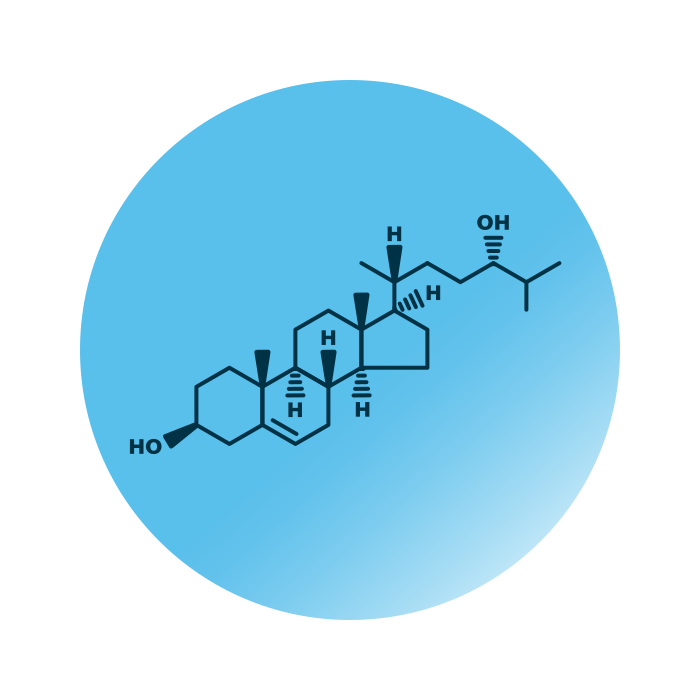About the structure and biological function of oxiChol
Structure. Oxidized cholesterols (cholesterol oxides, or oxiChol) belong to the group of cholesterol lipids within the sterol lipids category. Their structure consists of cholesterol: four linked hydrocarbon rings to which a hydrocarbon tail and a hydroxy group are linked. Oxidized cholesterols further encompass oxygen containing substituents such as hydroxyl and epoxy groups.
Function. Oxidized cholesterols act as potent inhibitors of cholesterol biosynthesis through inhibiting the enzyme HMG-CoA reductase. The formation of oxiChols is an indicator of lipid peroxidation, connecting oxidative stress to atherosclerosis, as oxidized cholesterols contribute to plaque formation. Further, oxidized cholesterols are involved in the pathogenesis and progression of other diseases, including neurodegenerative disorders, and age-related conditions, and may serve as biomarkers in conditions like Niemann-Pick C1 disease.
